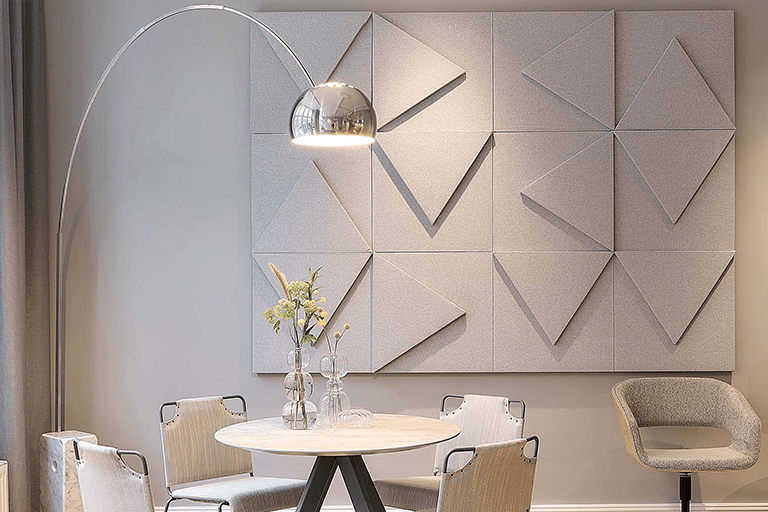Admin
November 3, 2024

Acoustics play a vital role in shaping environments, but not all acoustics are created equal. Architectural and industrial acoustics serve distinct purposes, addressing unique challenges and requirements. While architectural acoustics focuses on enhancing sound quality and controlling noise within spaces for human experience, industrial acoustics is centered around noise control and reducing environmental sound pollution to protect workers and surrounding areas. Understanding the differences between these two fields is essential for creating spaces that balance functionality, safety, and comfort.
Architectural acoustics, also known as building acoustics, is the science of controlling sound within built environments, such as auditoriums, theaters, offices, and residential spaces. This field involves optimizing sound quality, reducing unwanted noise, and enhancing the auditory experience for occupants. Key aspects of architectural acoustics include managing reverberation, preventing echoes, and designing spaces that support clear and enjoyable sound transmission.
Architectural acoustics focuses on both the aesthetics and functionality of spaces, ensuring that sound is a positive component of the environment. It combines materials, room geometry, and technology to craft soundscapes that enhance communication, productivity, and comfort within buildings.
Architectural acoustics is applied across a wide range of settings, each with its own specific requirements:
In each of these environments, architectural acoustics plays a crucial role in creating spaces that are pleasant and functional, improving overall quality of life and user experience.
Industrial acoustics is dedicated to controlling noise in industrial settings to protect workers, equipment, and surrounding communities from harmful sound levels. Industrial environments, such as factories, construction sites, and energy plants, generate significant noise, which can pose health risks to workers and disturb nearby areas. The primary goal of industrial acoustics is to reduce these noise levels, mitigating potential hazards and ensuring compliance with safety regulations.
Industrial acoustics focuses on noise isolation and control rather than enhancing sound quality. It uses specialized materials, barriers, and engineering techniques to reduce noise at the source, along pathways, and at the receiver, ultimately protecting workers' hearing and maintaining a safer, quieter workspace.
Industrial acoustics is essential in various sectors where noise can impact health, safety, and compliance:
In each of these applications, industrial acoustics is vital for adhering to regulatory noise limits, improving workplace safety, and reducing the environmental impact of industrial noise.
While both fields aim to manage sound, architectural and industrial acoustics differ significantly in purpose, approach, and methods:
These distinctions reflect the unique goals of each field, which range from enhancing ambiance and comfort to safeguarding health and safety.
Despite their differences, architectural and industrial acoustics face some similar challenges, such as balancing cost-effectiveness with acoustic performance. Both fields also need to consider spatial limitations, material durability, and sustainable practices.
To address these challenges, acoustic designers in both fields are increasingly adopting sustainable materials like recycled cotton, eco-friendly acoustic foams, and renewable resources like cork. Additionally, advanced modeling software helps optimize designs by simulating sound behavior in virtual environments, reducing material waste and ensuring precision.
Technology is also a common ally: in architectural acoustics, digital signal processing (DSP) systems refine sound quality in real-time, while industrial acoustics uses remote noise monitoring systems to maintain safe noise levels around the clock.
Both fields are evolving with a focus on sustainability, adaptability, and technology integration. In architectural acoustics, trends like adaptive acoustics—where sound conditions are automatically adjusted based on room usage—are transforming public spaces and theaters. Similarly, industrial acoustics is seeing advancements in smart materials that absorb or deflect sound efficiently and sustainably.
Sustainable practices are also a driving force. Both fields are moving toward low-impact materials, improved waste reduction, and energy-efficient sound systems. The adoption of digital acoustics management platforms is growing, allowing for precise, real-time adjustments and better regulatory compliance in industrial settings.
Architectural and industrial acoustics may differ in purpose, materials, and techniques, but both fields play an essential role in creating safe, functional, and enjoyable environments. Architectural acoustics enhances user experience through thoughtful design, while industrial acoustics ensures worker safety and regulatory compliance by controlling noise. As technology and sustainable practices continue to evolve, both fields will advance toward more efficient, eco-friendly solutions that meet the needs of modern spaces and industries.
With expertise in both areas, Refined Acoustics is dedicated to providing tailored solutions that prioritize quality, safety, and environmental responsibility, making a positive impact on spaces and communities alike.
© All Rights Reserved by Glim Global